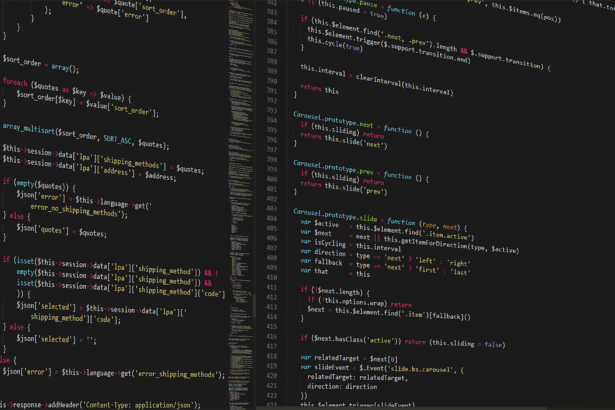How to Monetize SaaS Applications Effectively: A Step-by-Step Guide
As an experienced technology consultant with over 15 years in the SaaS industry, I’ve helped dozens of startups and enterprises turn innovative software into profitable ventures. Monetizing SaaS applications effectively isn’t just about slapping on a subscription fee—it’s a strategic blend of understanding your market, optimizing pricing, and leveraging data-driven growth. In 2023, the global SaaS market reached $195 billion, according to Statista, with projections to hit $307 billion by 2026. Yet, many fail due to poor monetization tactics. This guide outlines how to monetize SaaS applications effectively, with step-by-step strategies, real examples, a practical checklist, and FAQs to ensure your SaaS thrives.
- Understanding the SaaS Monetization Landscape
- Step 1: Define Your Value Proposition and Target Audience
- Step 2: Choose the Right Pricing Model
- Step 3: Implement Freemium and Trial Strategies
- Step 4: Optimize for Upselling and Cross-Selling
- Step 5: Leverage Analytics and Iteration
- SaaS Monetization Checklist
- Conclusion
- Frequently Asked Questions (FAQs)
Understanding the SaaS Monetization Landscape
Before diving into tactics, grasp the fundamentals. SaaS monetization revolves around recurring revenue models that align with customer value. Gartner reports that 80% of SaaS companies using freemium or tiered pricing see higher conversion rates. Key challenges include churn rates averaging 5-7% monthly (per ProfitWell data) and competition from giants like Salesforce. Success lies in value-based pricing, where you charge based on the outcomes your app delivers, not just features.
Step 1: Define Your Value Proposition and Target Audience
The foundation of effective SaaS monetization strategies is a crystal-clear value proposition. Start by segmenting your audience—identify pain points through surveys or tools like Google Analytics. For instance, if your SaaS is a project management tool, target remote teams struggling with collaboration.
- Conduct Market Research: Use surveys (e.g., Typeform) and interviews to validate demand. Data from HubSpot shows that targeted personas increase conversion by 2x.
- Map Features to Value: Prioritize core features that solve high-impact problems. Avoid feature bloat, which can dilute perceived value.
- Test MVP: Launch a minimum viable product to gauge interest. Refer to our guide on how to build a successful SaaS product for detailed steps.
Real Example: Dropbox started with a simple file-syncing MVP, focusing on ease for non-tech users, which propelled their freemium model to 700 million users.
Step 2: Choose the Right Pricing Model
Pricing is the engine of SaaS revenue optimization. Common models include freemium, tiered subscriptions, usage-based, and flat-rate. According to OpenView Partners, hybrid models (freemium + tiers) yield 25% higher lifetime value (LTV).
- Freemium: Free basic access to hook users, then upsell premiums. Ideal for consumer apps.
- Tiered: Basic, Pro, Enterprise levels based on users or features. Slack uses this, with Pro at $6.67/user/month.
- Usage-Based: Charge per API call or storage, like Twilio, scaling with growth.
- Perpetual with Maintenance: Less common in SaaS but viable for legacy transitions.
Pro Tip: A/B test pricing pages using tools like Optimizely. McKinsey data indicates that small tweaks can boost revenue by 10-15%.
Step 3: Implement Freemium and Trial Strategies
To drive adoption, offer free trials or freemium access. Limit trials to 14-30 days, ensuring users experience core value quickly. ProfitWell’s analysis shows 14-day trials convert 25% better than longer ones, as urgency motivates upgrades.
- Design Onboarding Flows: Use progressive disclosure to showcase premium features subtly.
- Set Usage Limits: In freemium, cap storage or integrations to nudge upgrades.
- Track Engagement: Monitor metrics like activation rate (users completing key actions) via Mixpanel.
Real Example: Zoom’s freemium model exploded during the pandemic, with free meetings limited to 40 minutes, converting millions to paid plans. This approach not only acquired users but reduced customer acquisition costs (CAC) by 40%, per their earnings reports.
Step 4: Optimize for Upselling and Cross-Selling
Once users are in, maximize revenue through upsells (upgrading tiers) and cross-sells (add-ons). Baremetrics reports that upsells contribute 20-30% of SaaS revenue.
- Personalized Recommendations: Use AI tools like Intercom to suggest upgrades based on usage.
- Feature Gates: Tease advanced features in the UI, like analytics dashboards.
- Annual Discounts: Offer 20% off for yearly commitments to improve cash flow.
As your SaaS grows, ensure infrastructure supports scaling—check our article on how to scale SaaS applications for global users for backend strategies.
Real Example: HubSpot’s inbound marketing SaaS upsells from free CRM to premium suites, achieving a 120% net revenue retention rate (Forrester data).
Step 5: Leverage Analytics and Iteration
Monetization is iterative. Track KPIs like Monthly Recurring Revenue (MRR), Churn Rate, and LTV:CAC ratio (aim for 3:1). Tools like ChartMogul provide dashboards for insights.
- Monitor Churn: Exit surveys reveal why users leave—address with feature updates.
- A/B Test Continuously: Experiment with pricing and CTAs.
- Integrate Feedback Loops: Use NPS scores to refine offerings.
Statista notes that data-driven SaaS firms grow 2.5x faster. For performance tuning in high-traffic scenarios, explore PHP-FPM tuning for maximum concurrency.
SaaS Monetization Checklist
Before launch, run through this checklist to ensure successful SaaS monetization tactics:
- [ ] Validate value proposition with 50+ potential users.
- [ ] Select and A/B test 2-3 pricing models.
- [ ] Implement 14-day trials with clear upgrade paths.
- [ ] Set up analytics for MRR, churn, and LTV tracking.
- [ ] Plan upsell campaigns with personalized emails.
- [ ] Optimize for mobile and global scalability.
- [ ] Review legal aspects like GDPR compliance for subscriptions.
- [ ] Budget for CAC under 1/3 of LTV.
Conclusion
Monetizing SaaS applications effectively demands a blend of strategy, empathy for users, and relentless optimization. By following these steps—from defining value to iterating with data—you can build sustainable revenue streams. Remember, companies like Slack didn’t succeed overnight; they iterated based on user feedback. Start small, measure everything, and scale smartly. With the SaaS market booming, now’s the time to act.
Frequently Asked Questions (FAQs)
1. What is the best pricing model for a new SaaS app?
Freemium or tiered works best for startups to acquire users quickly, as per Bessemer Venture Partners’ State of the Cloud report.
2. How do I reduce churn in my SaaS?
Focus on onboarding and proactive support. Automate re-engagement emails for at-risk users, reducing churn by up to 15% (ChurnZero data).
3. What’s the average LTV for SaaS products?
Averages $1,000-$5,000, but varies by industry. Aim to calculate yours using MRR divided by churn rate.
4. Should I offer annual billing?
Yes, it lowers churn by 20-30% and improves predictability, according to Zuora’s subscription economy index.
5. How much should I spend on marketing for monetization?
Keep CAC below 1/3 of LTV. bootstrapped SaaS often allocate 20-30% of revenue to acquisition.
(





